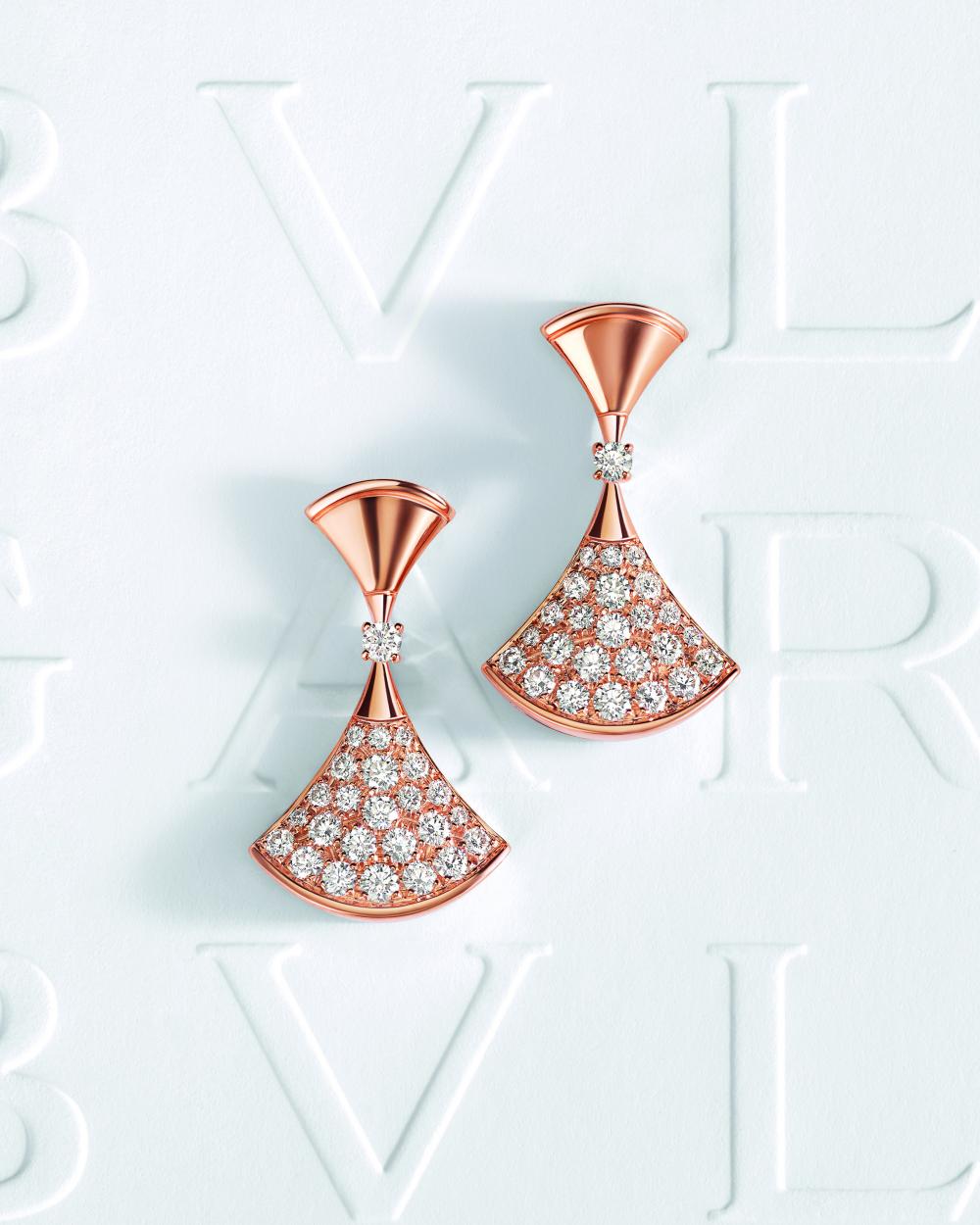Bulgari hails its hometown of Rome as an archaeological treasure. The prestigious jewellery house has helped preserve landmarks such as the Spanish Steps, where Sotirio Bulgari opened his first shop in 1884.

Also restored by Bulgari, the lavish mosaics of the Baths of Caracalla (known as the Thermae Antoninianae in ancient Rome) is another example of its financial support in preserving archaeological heritage.
The restoration included the polychrome-marbled mosaic floor, whose fan-shaped motif inspired the Divas' Dream jewellery launched in 2016.
The 2022 novelties feature opaque stones in designs that play with different textures and degrees of brightness. Malachite and mother-of-pearl inserts are framed by pavé diamonds on rose gold pendants, rings and stud earrings.
The geometric pattern appears as an openwork element as well as a stone insert framed by pavé diamonds on the delicate bracelet.
The signature motif triples in a rose gold necklace with three fans -- one open-worked, one full set with diamonds and one combining a mother-of-pearl insert with diamonds accents. The playful design has a double chain passing through the central fan-shaped frame.

The high-jewellery pieces boast a combination of precious stones artfully cut to fit the intricate design. Every single stone inlay is then masterfully mounted using the marquetry technique.
From amethyst, citrine and mandarin garnet to rubellite, tanzanite and tourmaline, a cabochon-cut gem rises from the fan-shaped pendant, framed by leaves in other precious stones.
A stand-out necklace is adorned with 21 round fancy shaped spinels, with the different pink hues harmonised by the colour of rubies. The design culminates with a show-stopping pear-shaped spinel framed by diamond petals and exquisite gemstone inlays.
Bulgari's expertise in convertible jewellery is showcased in a necklace, whose chain can be partially detached to become a bracelet.
Multiple fans enliven the dial of the rose gold Divas' Dream Mosaica watch shimmering with diamonds, pink sapphires and rubellites. Moreover, the links are in the same shape to strap on the rich Roman heritage.











